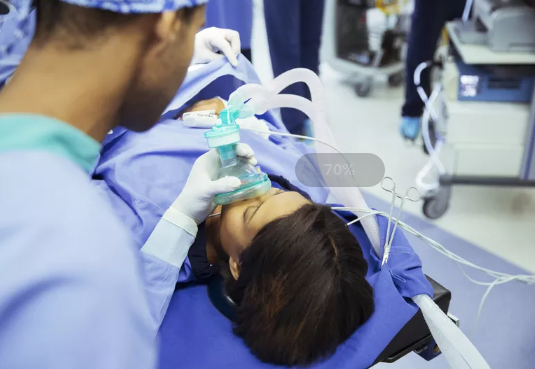
A ventilator, also known as a respirator or breathing machine, is a medical device that provides a patient with oxygen when they are unable to breathe on their own. The ventilator gently pushes air into the lungs and allows it to come back out like the lungs would typically do when they are able.
During any surgery that requires general anesthesia, a ventilator is necessary. There are also times when a ventilator is required after surgery, as the patient may not be able to breathe on their own immediately after the procedure.
Why a Ventilator Is Necessary During Surgery
General anesthesia works by paralyzing the muscles of the body temporarily. This includes the muscles that allow us to inhale and exhale. Without a ventilator, breathing during general anesthesia would not be possible. Most patients are on the ventilator while the surgery is taking place, then a drug is given to stop the anesthesia. Once the anesthesia stops, the patient is able to breathe on their own and they are removed from the ventilator.
Why a Ventilator May Be Necessary After Surgery
A ventilator is necessary when the patient is unable to breathe well enough to provide oxygen to the brain and body.
Some patients, due to injury or illness, cannot breathe well enough after surgery to be removed from the ventilator. This may be due to poor lung function prior to surgery, which can happen when patients have damage to their lungs caused by Chronic Obstructive Pulmonary Disease (COPD). Patients who smoke also experience higher rates of requiring a ventilator longer after surgery is completed.
This also happens when the patient is too ill to breathe for themselves. This may happen due to trauma (such as a life-threatening car accident), infection or another problem. A patient who is on the ventilator prior to surgery will likely remain on the ventilator after surgery until they recover enough to breathe well on their own.
Some surgeries require the patient be on the ventilator for a short time after surgery as part of the plan. For example, patients having open heart surgery are typically maintained on a ventilator until they wake up enough to lift their head off of their pillow and can follow simple commands. They are not given a drug to stop the anesthesia, rather it is allowed to wear off on its own, and the patient is removed from the ventilator when they are ready to breathe on their own.


